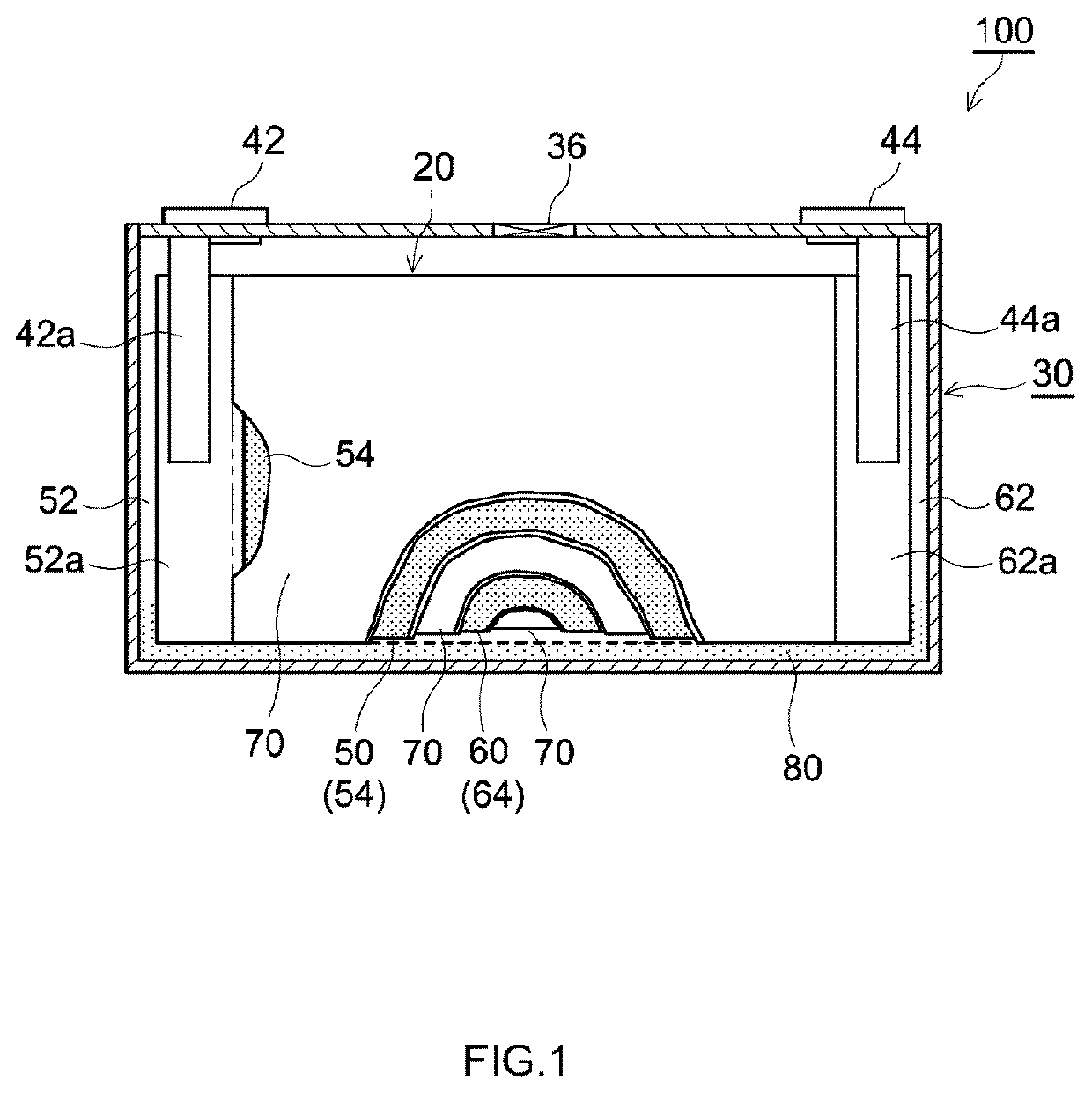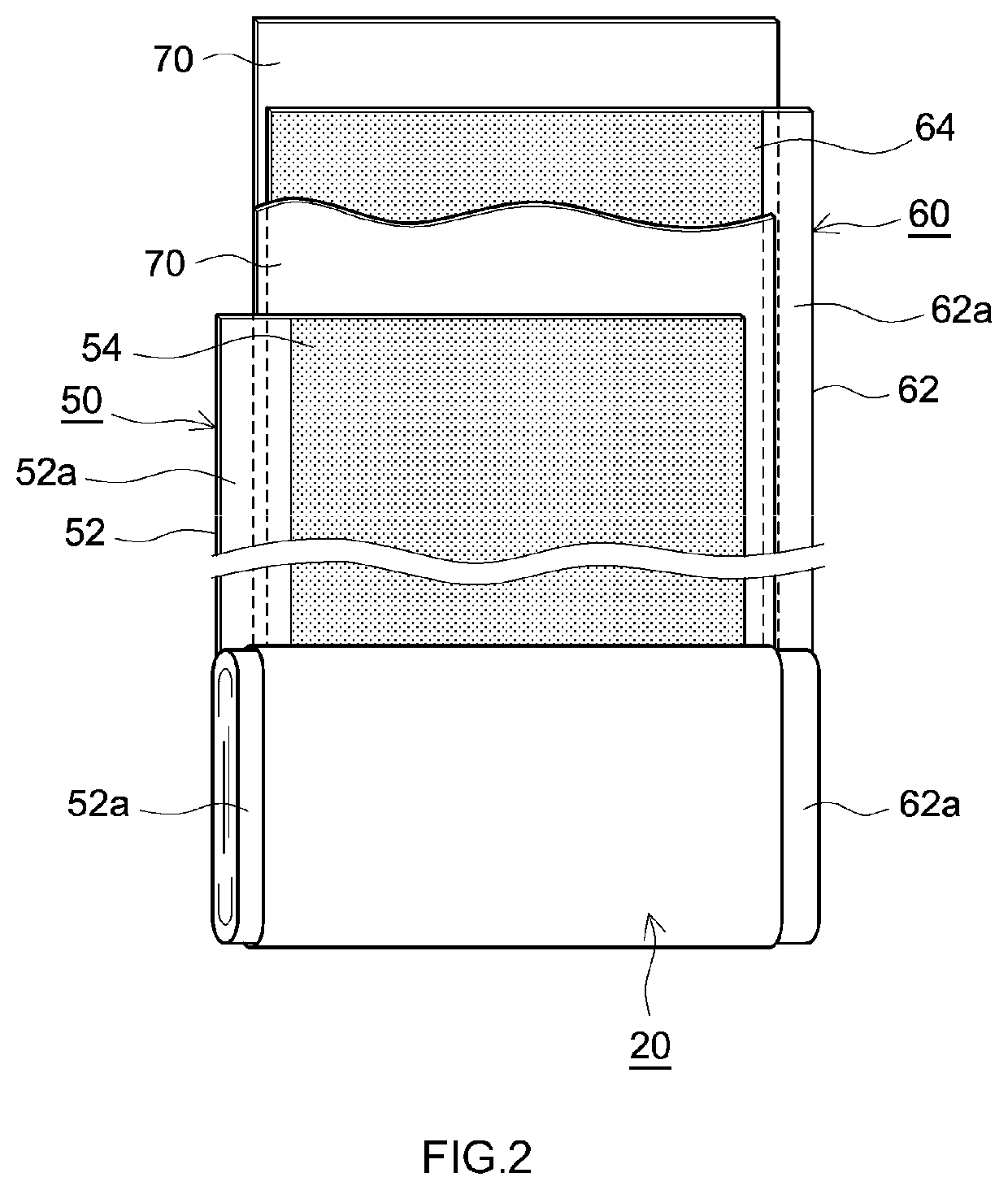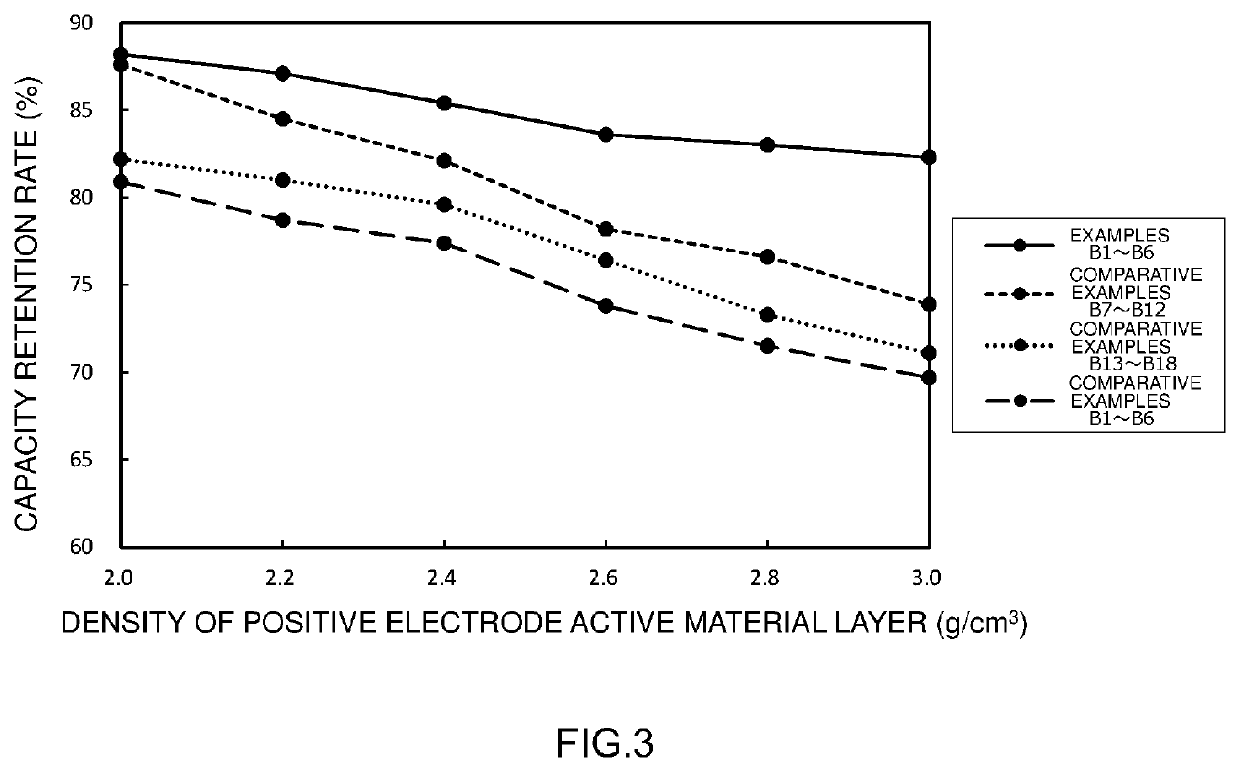Nonaqueous electrolyte secondary battery and manufacturing method thereof
a technology of nonaqueous electrolyte and secondary batteries, which is applied in the manufacturing process of electrodes, cell components, electrochemical generators, etc., can solve problems such as capacity deterioration, and achieve the effect of suppressing the effect of high capacity deterioration
- Summary
- Abstract
- Description
- Claims
- Application Information
AI Technical Summary
Benefits of technology
Problems solved by technology
Method used
Image
Examples
examples a1 to a3
[0095]Lithium manganese oxide particles A (LMO-A), carbon black (CB) as a conductive material, and polyvinylidene fluoride (PVDF) as a binder were mixed at mass ratios of LMO-A:CB:PVDF=94:4:2 in N-methyl-2-pyrrolidone (NMP). At this step, Li3PO4 was further mixed in an amount of 0.5 mass % based on the amount of the lithium manganese oxide particles, thereby preparing a paste for forming a positive electrode active material layer. It should be noted that the average particle diameter (median diameter D50) of Li3PO4 used was 2.1 μm.
[0096]The paste for forming a positive electrode active material layer was coated on aluminum foil, and dried, and then a roll press treatment (i.e., densification treatment) was performed, thereby preparing a positive electrode sheet. The roll press treatment was performed so that the density of the positive electrode active material layer became 2.6 g / cm3. The press treatment caused cracking in the lithium manganese oxide particles A. The positive electr...
examples b1 to b6
[0116]Respective positive electrode sheets were prepared in the same manner as in Example A1. Each positive electrode sheet was subjected to a roll press treatment so that the densities of the positive electrode active material layers became 2.0 g / cm3 (B1), 2.2 g / cm3 (B2), 2.4 g / cm3 (B3), 2.6 g / cm3 (B4), 2.8 g / cm3 (B5), or 3.0 g / cm3 (B6), respectively. Each positive electrode sheet was cut into dimensions of 120 mm×100 mm.
[0117]A battery assembly was prepared using the cut positive electrode sheet in the same manner as in Example A1. The battery assembly was subjected to constant current charging up to 4.7 V at a current value of 0.1 C as the initial charging treatment. Then, constant voltage charging was performed for 3 hours, thereby carrying out initial charging. Subsequently, constant current discharging was performed to 3.0 V at a current value of 0.1 C, resulting in each evaluating lithium ion secondary battery of Examples B1 to B6.
PUM
| Property | Measurement | Unit |
|---|---|---|
| density | aaaaa | aaaaa |
| voltage | aaaaa | aaaaa |
| thickness | aaaaa | aaaaa |
Abstract
Description
Claims
Application Information
 Login to View More
Login to View More - R&D
- Intellectual Property
- Life Sciences
- Materials
- Tech Scout
- Unparalleled Data Quality
- Higher Quality Content
- 60% Fewer Hallucinations
Browse by: Latest US Patents, China's latest patents, Technical Efficacy Thesaurus, Application Domain, Technology Topic, Popular Technical Reports.
© 2025 PatSnap. All rights reserved.Legal|Privacy policy|Modern Slavery Act Transparency Statement|Sitemap|About US| Contact US: help@patsnap.com



